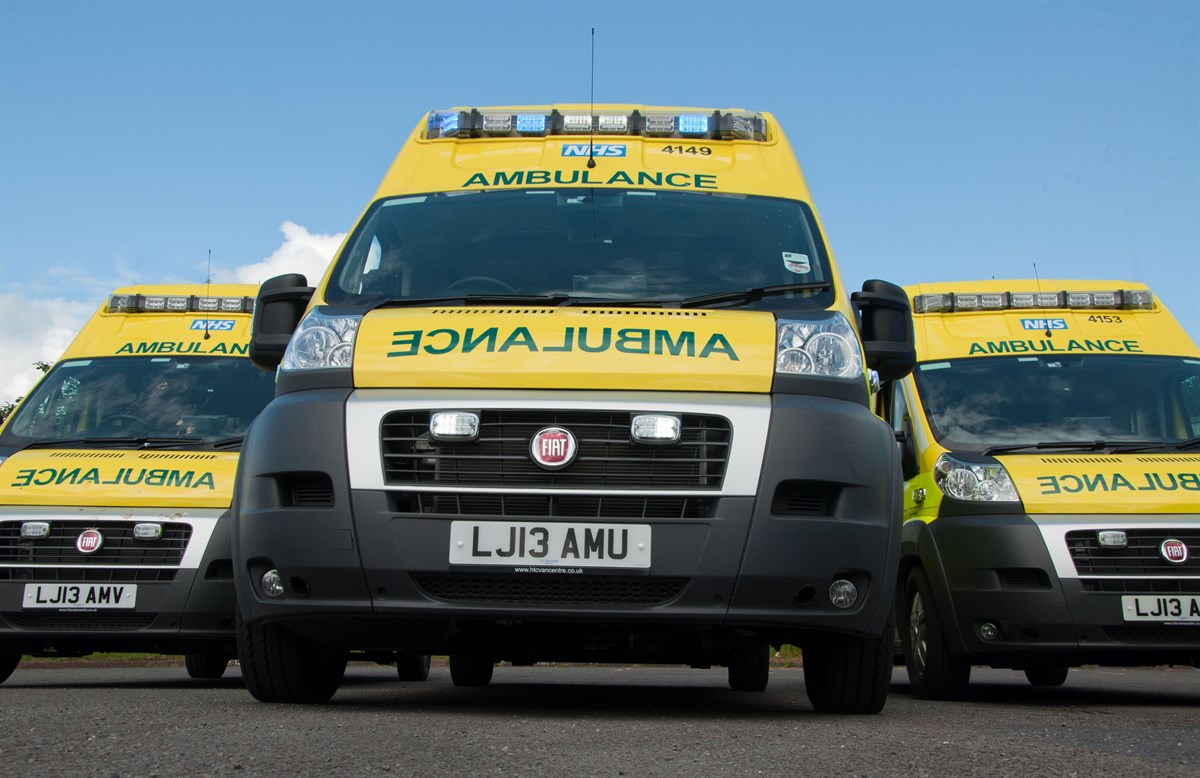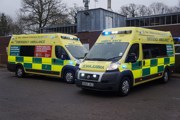Minimising vehicle downtime to ensure patient care is delivered as effectively and efficiently as possible within ever-tightening financial constraints is the absolute focus of the award-winning fleet team at West Midlands Ambulance Service NHS Foundation Trust (WMAS).
The Service serves a population of 5.36 million people covering an area of more than 5,000 square miles across Shropshire, Herefordshire, Worcestershire, Staffordshire, Warwickshire, Coventry, Birmingham and the Black Country conurbation.
Operational vehicle downtime has already been reduced by two-thirds following the Trust-wide move to a ‘make ready operating model’ that sees more than 550 blue light vehicles operating out of 16 newly-opened fleet preparation centres.
Tony Page was appointed general manager, fleet services, at the Trust two years ago and brought with him 30 years of fleet experience gathered in a number of large private sector organisations, latterly managing the ground fleet at airline BMI.
In addition to the blue light fleet, Page is also responsible for managing 226 Passenger Transport Service vehicles and a further 350 support vehicles including vans used for courier services, transporting clinical waste and medical equipment.
Although the ‘make ready’ operating model was already being introduced prior to the WMAS being named van fleet of the year – public sector and blue light in the 2014 Fleet Van Awards, Page says: “My background allowed me to look at the operation through a commercial pair of eyes, which has brought a fresh approach to the whole of fleet services.
“We have encouraged and developed a more commercial approach to how the fleet service operates.”
Critically, there is a significant emphasis on data-driven decision making. Operational areas are monitored and benchmarked across a raft of fleet performance metrics – vehicle turnaround time in respect of scheduled and unscheduled events and pence-per-mile running costs – enabling expenditure to be further reduced, improved procurement and realistic budget-setting alongside effective and efficient maintenance programmes.
Improved procurement has, for example, included the introduction of 4x4 ambulances for operation in more remote areas which can negate the need to call in an air ambulance thus not diverting a valuable resource away from other potentially more significant requirements.
WMAS has also introduced a new fleet management software system and put into place the ongoing introduction of in-vehicle telematics and closed-circuit television.
By mid-March, 101 new ambulances and two driver training units will be equipped and on the road, enabling further detailed vehicle analysis which, says Page, has further focused the fleet operation on “data driven decision-making”.
Preaching a team ethic – Page leads a 58-strong fleet department composed of workshop and administration staff and management colleagues – he says: “I have implemented a culture throughout the department of individual accountability for each area of responsibility, not in a ‘blame culture’ way, but in positive tandem with a ‘don’t let the team down‘ mentality.
“This has very much been embraced by the workforce, providing them with an opportunity to widen their scope and have significantly more involvement and input into decisions that affect their areas of expertise. By doing so, interest in the results of their individual actions on the team as a whole has increased dramatically.”
Crucially, he says, the Trust’s hierarchy recognises the importance of the fleet service allied to the excellence of clinical staff to the delivery of patient care. “Everything is geared to reducing vehicle off-road time,” says Page. However, he adds: “While ensuring vehicles are on the road we must ensure the costs for doing so are within ever-tightening budgets.”
That is why Page continues to “pedal harder than ever” in terms of working with the fleet team, colleagues across the other 12 UK ambulance services and supplying partners, to deliver innovative cost-saving solutions.
Although the fleet management function is now based in Birmingham, there is devolved responsibility across the 16 hubs – servicing a network of more than 90 community ambulance stations – where workshop staff work in tandem with 125 ambulance fleet attendants (AFAs)
Historically, clinically trained ambulance crews would spend the first part of their shift cleaning and restocking vehicles, fuelling and undertaking a series of pre-departure roadworthiness checks.
Under the ‘make ready’ operating model, such tasks are performed by the AFAs, leaving highly-skilled, clinically trained crews to report for duty and immediately attend to frontline responsibilities. “Operational downtime has been reduced significantly as vehicles are maintained on a pro-active rather than reactive basis,” says Page. Each purpose-built hub has a workshop that can react immediately to rectify defects highlighted by the AFAs, thereby maximising ambulance availability and minimising breakdowns.
What’s more, the combination of centralised fleet management and use of a fleet software system accessible by staff, from mechanics to management across all locations, has already delivered cost and efficiency savings with, says Page, “more to come”.
For example:
¦ Spare parts holding has been cut by over half with better management.
¦ Fitting alloy wheels to ambulances has enabled the frequency of replacing front brake pads and discs to be reduced, extending life from 6,000 to 9,000 miles, saving about £40,000 in parts and more than 3,500 man hours annually.
Additionally, liaising closely with manufacturer partners –Fiat is the Service’s ambulance provider with Peugeot, Citroën, Škoda, Honda and BMW vehicles also on the operational and support fleet – has seen new ramps for patient access designed that have eradicated component failures thus reducing replacement parts spend by £100,000 with a further saving expected in 2014/15.
Utilising the way aircraft maintenance is managed, the Service’s fleet management system has split vehicles into 26 “maintenance zones” – clutch, brakes, ramps etc., to identify the highest off-road vehicle expenditure.
As well as identifying ramp component failure – the largest off-road vehicle expenditure – solutions have been introduced to rear door cracking at hinge points on ambulances, a more robust opening mechanism on side doors to prevent failure, and a one-piece scuttle panel under the windscreen replacing a two-part version to prevent water ingress to the engine bay causing mechanical failures.
“Vehicle off-road time has significantly reduced,” says Page, proudly, while also pointing out that WMAS has the lowest accident frequency of any of the UK’s ambulance services.
All vehicles – currently largely funded via operating lease, although financing methods are continually kept under review – across the diesel-only fleet are replaced on a five-year cycle.
It is, believes Page, a combination of the newness of models, coupled with a robust maintenance programme allied to a first class driver training programme, that means employees look after vehicles.
Looking forward, there remains much to do, with the focus remaining on reducing cost, according to Page:
¦ Work with converters is taking place to reduce vehicle weight, including via the introduction of easy clean cabinets that in turn will deliver fuel savings
¦ Electric vehicles have been trialled and zero emission cars and vans will be introduced to the support fleet in 2015 with potentially more to follow
¦ The introduction of in-vehicle telematics will deliver “useable data” that can be investigated, such as vehicle idling and incident investigation
¦ The potential building of ambulances incorporating solar charging panels on roofs to reduce the reliance on trickle charging auxiliary batteries would reduce the need for the engine to be run whilst on standby waiting for emergency calls.
A further initiative has seen WMAS expand fuel bunkering with the opening of the hubs delivering a 6p a litre saving, compared with forecourt prices, with only 20% of diesel fuel now bought at retail outlets.
With annual fleet mileage rising – 13.4 million miles in 2013/14, estimated to reach 14.8 million miles for the frontline fleet in 2014/15 with WMAS handling more than one million incidents – fuel bunkering is saving around £150,000 a year, thus helping to fund the additional mileage.
The raft of innovations led by the ‘make ready operating model’ contributed towards what the Fleet Van Awards’ judges called “highly innovative and original thinking”.
Page says winning the award has given a “huge moral boost” to the entire fleet services department: “We have introduced a huge amount of change in the last two years and winning the award validates what we are doing.
“The team was very proud to win, but the hard work continues to deliver further savings so the maximum amount of budget goes into frontline care.”



















Login to comment
Comments
No comments have been made yet.